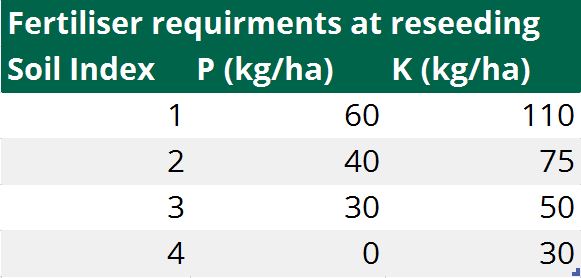Reseeding can increase the amount of grass grown on beef farms, but every acre does not need to be reseeded, according to Teagasc Advisor, Fiona Dolan.
“When you are looking at reseeding, you need to choose the fields that can make a return on the reseeding investment,” she said.
Dolan said that half of all livestock farms have a stocking rate of less than 1LU/ha and these farms will struggle to see a return from reseeding.
Teagasc research shows that the cost of reseeding can be recovered within a two-to-three year period, but it depends on the farm being adequately stocked to make the best use of the extra grass.
Speaking at a recent Teagasc Green Acres farm walk in Co. Laois, the Teagasc specialist said that farmers with high stocking rates should identify under-performing fields and target them for reseeding.
Spring is a great time of year to see what paddocks need to be reseeded.
“All types of grass will grow during the summer, but reseeded swards will have a longer growing season,” she said.
Dolan said that ‘old swards’ or swards which need to be reseeded will have lower growth rates during the spring time, due to the presence of weed grasses.
And, as a result, fields which need to be reseeded can be identified easily in the shoulders of the year, both in the spring and autumn time.
Why should you reseed?
She said that reseeded swards can grow an extra 5t of grass per hectare on an annual basis compared to old under performing swards.
The extra grass will carry an extra cow and calf or two weanlings over the year. Each extra tonne of grass grown on beef farms will leave an extra €100 net margin/ha.
Teagasc research also shows that old permanent pasture is up to 25% less responsive to available nutrients such as nitrogen than perennial ryegrass dominated swards.
It shows that the quality of grass is much higher in reseeded swards due to the presence of perennial ryegrass compared to older swards, leading to higher animal intakes and growth rates.
Put a plan in place before reseeding
Dolan also said that farmers need to put a plan in place prior to reseeding.
“Farmers should soil test first and and this will give an indication of why the good grasses died out of the sward,” she said.
The Teagasc Specialist said it is pointless reseeding unless the soil pH, Phosphorous (P) and Potassium (K) levels are correct.
Teagasc research shows that soils should be at least index 3 for both P and K prior to reseeding and the pH of the soil should be 6.3-6.5.
“Plan your soil test, have it taken in advance of when you are planning to reseed,” Dolan said.
Teagasc advice on fertiliser requirements of reseeds:

